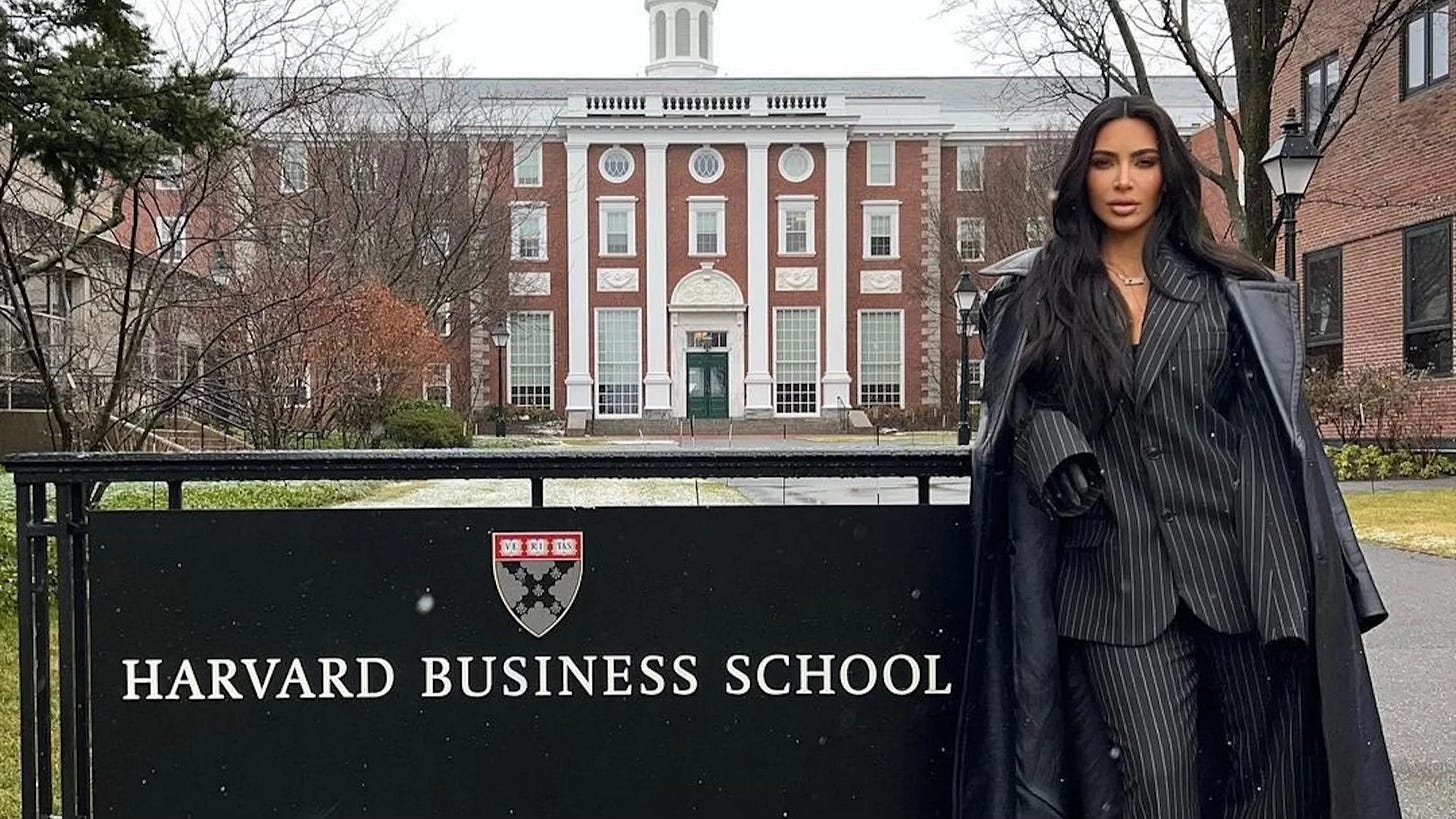A Field Focused on Elites
We would not look to the Kardashians to understand most American families. Why then do we look to elite institutions to understand most colleges and universities?
The 1% live in a reality different from the 99%, separated from everyday experiences by a chasm of wealth and privilege. While they may dominate the airwaves, their concerns and priorities remain irrelevant to ordinary families focused on putting food on the table.
But the same is true of elite schools. This reality gap is equally stark in higher education as their enormous endowments and legacy admissions couldn’t be more different from what it looks and feels like to work at and attend an ordinary college. Like celebrities, these schools occupy the lion’s share of media attention, but Princeton and Yale’s concerns are far removed from those heard at Bethel College or Youngstown State University.
What insights do we miss by keeping our gaze fixed on the loudest and most powerful voices? And what possibilities do we overlook by ignoring the rest – the institutions that provide educational access and opportunity to marginalized students?
In my forthcoming book, Capitalizing on College: How Higher Education Went from Mission Driven to Margin Obsessed, I take up these fundamental questions and uncover what we can learn from the thousands of tuition-driven schools that rely on sustaining student enrollment to survive.
If we shift our attention from prestigious names and focus on less selective, broad access schools, a more illuminating and accurate picture of American higher education emerges––one that challenges our core assumptions about the field.
Assumption #1: Schools Have Endowments
The big numbers make the headlines. Each year features stories of major philanthropists contributing substantial sums to their alma maters to build new athletic centers and gleaming laboratories. As elite schools parade high-profile donors through commencement speeches and homecoming games, they perpetuate a narrative that equates being an American college with sitting on a deep well of social and financial capital.
In reality, most schools must constantly innovate, identifying and developing creative new enrollment markets to remain financially solvent. For many of these institutions, focusing on their mission––like providing underserved communities with access to education––never yielded a prestigious alumni network that would provide an endowment to financially shore up the “residential core.” Yet rather than abandoning their calling, many tuition-driven schools creatively find ways to expand their sources of revenue.
Assumption #2: College Is a Faraway Place You Go To After High School
From Animal House to The Social Network, American culture is awash with portrayals of the typical “college experience.” For generations, it has been understood that young adults leave home in a coming-of-age ritual to attend college in person on a campus adorned with stately buildings and manicured grounds. Frivolity ensues. Despite its high cost of delivery, this residential model has persisted as the foremost legitimate form of higher education.
But when greater numbers of jobs required a college degree in the late 20th century, it became increasingly important for individuals of all ages (not just traditional-aged college students) to obtain a degree. Facing financial pressures, non-elite schools developed new revenue streams by capturing new markets and through diverse course delivery models including satellite campuses, adult education, and online programs. By opening alternative pathways for non-traditional students, these modalities have eclipsed their residential counterparts, with only 33% of US college students planning to live on-campus in 2024.
Assumption #3: There Are No Profits in Nonprofits
The common belief is that nonprofits do not make money – after all, it’s right there in the name. Profits – or margins – are seen as antithetical to the mission of colleges and universities delivering a “common good” like education. The headlines of the past decade have focused on for-profit schools, highlighting stories of predatory practices, fraud, and excessive student loans, while largely overlooking how schools in the nonprofit sector pursue revenue.
But in truth both the nonprofit and the for-profit sectors of higher education are built on the same market-oriented logic because competition makes no distinction between the different kinds of institutions. Shifting the focus from sectors to strategies (as I do in my book) highlights the extent to which all higher ed institutions rely on similar practices to secure financial resources. Every school is seeking profits wherever they can, and tuition-driven schools have quickly created new educational products and delivered them to those new markets to secure the margins they need to survive.
Assumption #4: Quality Facilities = Quality Education -or- “What you see is what you get.”
State-of-the-art libraries, high-tech classrooms, luxury dorms, and spotless athletic facilities are often regarded as indicators of a school’s quality. The underlying assumption is that if a school can afford the best-in-class buildings and amenities, it must be because of the high quality and value of its educational programming. The writing is literally on the wall.
In reality, within an increasingly competitive market, colleges must often invest preemptively in campus upgrades as an enrollment strategy. At tuition-driven schools, the peripheral markets and additional modalities for course delivery provide them with margins they turn around and use to transform the physical campus—what I call “margin capitalization.” Rather than what you see is what you get, what you see is the cost of doing business.
Assumption #5: Everybody Wants To Be Harvard
Take your pick of any region in the United States outside of Cambridge, MA, and you can find a school that calls itself the Harvard of the West, or the South, or the Great Plains. The “little Ivies,” “public Ivies,” and even “hidden Ivies” are meant to denote a level of quality and prestige that rivals the oldest and most elite colleges in the United States. From endowment size to research ranking to prominent alums and faculty, countless administrators at aspiring Ivies use Harvard and its Ivy League companions as a benchmark for success.
But it turns out that most higher ed institutions are not interested in using the Ivy League as their basis for comparison. At tuition-driven schools across the country, the mission isn’t to produce the next generation of financial analysts for Goldman Sachs: it’s to provide educational access to first-generation, underrepresented, and diverse student populations. This embodies a vision of higher education that has long been an integral part of the American promise of opportunity.
Seeing the Forest Through the Ivies
Like the Kardashians, elite schools are effective at capturing our attention, and, if left unexamined, can lull us into thinking they represent the norm. But as I show in Capitalizing on College, the truth about higher education emerges not in the headlines but from the margins.
Growth Tools:
What I’m Reading: Antifragile: Things That Gain from Disorder by Nassim Nicholas Taleb. I have returned to this book recently because of the seemingly deliberate and strategic “chaos” that remains a central feature of the present political climate. One university provost in this study urged me, “Where there is change, there is danger. And where there is change there is opportunity.” I am reading Antifragile to understand more about what underlies the latter as well as whether there are strategies some people deliberately develop to bring about opportunity through chaos and change.
Let’s Connect: Please drop me a note on Substack, LinkedIn, X, or my website if you are interested in the “other 99%” of colleges and universities, or to tell me what you are reading and why. I would love to hear. You may see your name/suggestion here in a future issue.
Join the Launch Team: Have you ever been curious about what it takes to launch a book, or how to promote your own work? Here’s your chance to be part of the process! I’m assembling a book launch team where participants will receive early access to the book and, in turn, contribute an Amazon/Goodreads review, engage in weekly social media efforts in April, and join a Zoom debrief to discuss PR takeaways. If you’re interested, please reach out via Substack, LinkedIn, X, or my website.




